Adaptive Controllers: Making Gaming Accessible for Everyone
Updated On: November 12, 2025 by Aaron Connolly
What Are Adaptive Controllers?
Adaptive controllers are special gaming devices designed to let players with disabilities dive into video games using customisable inputs and features. They tackle physical barriers that often keep people from using regular controllers.
Definition and Core Functions
Adaptive controllers give players new ways to interact with games by offering alternative input methods. Microsoft’s Xbox Adaptive Controller is probably the most famous example, featuring big programmable buttons and lots of ports for external switches and devices.
Key functions include:
• Remappable inputs – Players can assign any button to any action
• External device support – Easily connect switches, joysticks, or foot pedals
• Pressure sensitivity adjustment – Lighter touch can trigger buttons
• One-handed operation – Handy for folks with limited mobility
These controllers work with assistive tech like sip-and-puff switches, eye-tracking systems, and unique joysticks. Players set up custom control schemes that fit their own needs.
Key Differences from Standard Video Game Controllers
Standard controllers expect players to use both hands and have nimble fingers. Adaptive controllers toss out those assumptions.
Physical design differences:
• Bigger, flatter surfaces with spaced-out buttons
• Lots of 3.5mm jack ports instead of stuck-in-place controls
• Modular parts you can move around
• Works with wheelchairs and all sorts of setups
Traditional controllers force you into fixed layouts and precise thumb moves for analog sticks. Adaptive controllers let you swap in head switches or even breath control.
The software side changes too. Adaptive controllers come with companion apps for tweaking timing, sensitivity, and button combos—no tech degree required.
Types of Adaptive Controllers
Console-specific adaptive controllers:
• Xbox Adaptive Controller – For Xbox and PC
• PlayStation Access Controller – Sony’s take for PS5
• Third-party options – Other companies make their own gear
Input method categories:
• Switch-based systems – External buttons and switches
• Eye-tracking controllers – Play with just your eyes
• Breath-controlled devices – Sip-and-puff inputs
• Motion-sensing options – Head or body movement
Many adaptive controllers let you mix and match input methods. For example, someone might use foot pedals for movement and eye-tracking for menus.
Price ranges:
• Basic switch adapters: £50–£150
• Full adaptive systems: £200–£400
• High-end setups: £500+
Primary Benefits of Adaptive Controllers
Adaptive controllers change the game by adjusting to each player’s needs and physical abilities. These smart systems help make gaming more inclusive by personalising controls and opening up esports to more people.
Enhanced Accessibility
Adaptive controllers knock down barriers for disabled gamers who find traditional controllers tough or impossible to use. They bring custom button layouts, tweakable sensitivity, and support for external switches or assistive devices.
Players with limited mobility can move functions to easier-to-reach buttons. Folks with a weaker grip get lighter button presses. The tech adapts instantly to whatever input method you use—eye tracking, breath control, single switches, you name it.
Key accessibility features:
- Programmable button assignments
- Adjustable pressure sensitivity
- One-handed modes
- Easy connection to external devices
More than just casual play, adaptive controllers now let users join competitive tournaments. Some esports teams even recruit disabled players.
Personalised Gaming Experience
Modern adaptive controllers watch how you play and adjust control schemes on the fly. They track reaction times, favorite button combos, and movement habits to build custom setups.
Competitive gamers can fine-tune precision settings for their style. The controller tweaks trigger sensitivity for different games—lighter for racing, firmer for shooters. It shapes response curves to fit you, no manual setup needed.
Personalisation features:
- Automatic sensitivity tweaks
- Custom response curves
- Playstyle recognition
- Genre-based profiles
Pro esports players rely on these systems to keep their performance steady across tournaments and setups. It saves them from fiddling with settings before every match.
Inclusive Multiplayer Gaming
Adaptive controllers help level the field in multiplayer games by bridging physical differences. They make sure hardware isn’t what decides who wins.
Online matchmaking improves when players compete by skill, not by what their hands can do. Adaptive tech lets people with different needs play together, no problem.
Multiplayer advantages:
- Fairer competition
- Cross-disability matches
- Fewer hardware limits
- Skill-based matching
Gaming communities see more diversity and engagement as adaptive controllers get more common. Tournament organisers even create special categories to highlight adaptive skills.
Popular Adaptive Controllers on the Market
A few adaptive controllers have really changed how disabled gamers access their favorite games. Microsoft’s Xbox Adaptive Controller leads the way with its modular design. Evil Controllers offers custom mods, and Quadstick brings mouth-operated precision for FPS fans.
Xbox Adaptive Controller Overview
Microsoft’s Xbox Adaptive Controller shook up accessible gaming when it launched in 2018. For about £90, you get big programmable buttons and tons of ports for switches, joysticks, and mounts.
Microsoft worked with groups like The Cerebral Palsy Foundation and AbleGamers to build this modular system. The controller runs on Xbox consoles and Windows 10 PCs, unlocking thousands of games.
Key features:
- Two giant programmable A/B buttons
- Large directional pad
- Lots of USB and audio jack ports
- Button remapping via Xbox Accessories app
- Works with external devices like foot pedals
It’s super expandable. You can hook up switches, different joysticks, and mounting gear to build your own setup. Multiple profiles let each player save their favorite layout.
This controller brought adaptive gaming into the mainstream and showed that accessible gear can be both affordable and powerful.
Evil Controllers Modification Options
Evil Controllers takes a totally custom approach. Instead of selling off-the-shelf devices, they work directly with each gamer to design a controller that fits their needs.
They start with a chat—email or phone—to understand your challenges. You might send photos or videos to show what you need.
Their process:
- One-on-one design chats
- Prototype builds and testing
- Tweaks based on your feedback
- Custom graphics and colors
After the first chat, Evil makes a prototype. Then they work with you to move buttons, change grips, or fix controls until it feels just right.
Prices jump around depending on what you need. But you end up with a controller built just for you and how you like to play.
Competitive gamers love Evil Controllers for their high-performance mods. They bring that same energy to accessibility, so you don’t have to settle for less.
Quadstick FPS Game Controller Features
The Quadstick FPS lets quadriplegic players game with their mouths. At about £550, this controller uses sip-and-puff tech and lip sensors for precise input.
Fred Davison created the Quadstick so quadriplegic gamers could play on equal footing. Streamers like RockyNoHands have shown off its competitive chops, even making a living using the device.
Specs:
- Mouth-controlled joystick
- Four sip/puff sensors
- Lip position sensor for extra commands
- Custom button mapping on the fly
- Direct play on PlayStation and Nintendo Switch
The Quadstick works with PS4, PS3, and Switch right out of the box. With adapters, you can use it on PS5, Xbox, and PC—pretty much everywhere.
You get several mounting options for comfy, long play sessions. The controller’s precision lets you compete in tough genres like shooters and racing.
Quadstick proves adaptive controllers can match standard ones for performance, while opening gaming to folks with severe mobility limits.
Console Compatibility and Support

Adaptive controllers work with all sorts of gaming systems, though some consoles make it easier than others. Xbox leads the pack with built-in support, but PlayStation and Nintendo need specific third-party controllers for the best experience.
Adaptive Controllers for Xbox Consoles
The Xbox Adaptive Controller works right out of the box with Xbox One and Xbox Series X|S. Microsoft built it specifically for disabled gamers, with 19 3.5mm ports and two USB 2.0 ports.
It’s a wide platform—about 11.5″ by 5″—with a big directional pad and two huge customisable buttons you can remap.
You can plug in switches, buttons, and joysticks through all those ports. The controller saves three button mapping profiles for quick swaps.
Xbox Controller Assist (once called Copilot) lets you pair the Adaptive Controller with a regular Xbox controller, so two people can control the same game together.
| Feature | Xbox Adaptive Controller |
|---|---|
| Console compatibility | Xbox One, Xbox Series X|S |
| External ports | 19 × 3.5mm, 2 × USB 2.0 |
| Button profiles | 3 customisable profiles |
| Price range | Around £225 with accessories |
Support for PS4 and PS3
Sony launched the Access Controller for PS5 in late 2023. It’s a round controller with swappable buttons and adjustable sticks to fit different needs.
The Access Controller uses AMPS mounts for easy setup on stands or wheelchairs. You can save up to 30 control profiles right on the console.
Two Access Controllers can team up as one, or you can pair them with a standard DualSense for haptics and adaptive triggers.
If you need multiple input options, the Access Controller usually costs less than Xbox’s full setup.
For PS4 and PS3, you’ll mostly use third-party solutions. Sony didn’t make official adaptive controllers for those older systems.
Adaptive Controller Options for Nintendo Switch
The Hori Flex Controller is the main adaptive option for Nintendo Switch. It connects to Switch and Windows PCs via USB.
It works more like a control hub than a classic gamepad. There’s a directional pad and six big action buttons on the main unit.
Sixteen 3.5mm ports line the front for various inputs. Two USB 2.0 ports let you add more devices, and separate jacks control the left and right sticks.
You can mount the Hori Flex on a camera stand using its built-in screw mount. That makes positioning way easier.
Heads up—Switch doesn’t have as many adaptive choices as Xbox or PlayStation.
Connecting and Configuring Adaptive Controllers
Setting up an adaptive controller means using special tools, adding external switches and joysticks, and mapping controls to fit your needs. Honestly, it helps to go step by step and test as you go to make sure everything works together.
Using the Controller Connect Tool
The Controller Connect Tool lets you hook up adaptive controllers to all sorts of gaming systems and devices. Most adaptive controllers actually work with a bunch of consoles, computers, and tablets.
You’ll get step-by-step guides for each gaming platform. The tool lays out specific instructions for Xbox, PlayStation, Nintendo Switch, and PC connections.
Connection methods vary by device:
- Xbox consoles use wireless or USB-C connections.
- PC setup works through Xbox Wireless, Bluetooth, or USB-C cable.
- Some systems need extra adapters or software.
You can quickly check compatibility between different adaptive controllers and gaming systems with this tool. That way, you’ll know your setup will work before you even start plugging things in.
A lot of users love the visual guides. You get diagrams that show exactly which ports and cables to use for each connection type.
Setting Up Adaptive Switches and Joysticks
You plug external switches and joysticks into the big ports on your adaptive controller. Each port matches a specific button function—like A, B, X, or Y.
Common switch types include:
- Large push buttons for easier activation.
- Foot switches for hands-free control.
- Sip-and-puff switches you operate by breathing.
- Head switches if you’ve got limited hand movement.
The Xbox Adaptive Joystick plugs in through USB ports on your controller. You can use either the left or right port, depending on your setup.
Each port has a clear label showing which controller input it replaces. It’s genuinely plug-and-play, so you don’t need special software just to get started.
Test each switch and joystick after connecting them. Sometimes you’ll need to tweak their position or sensitivity a bit to get them just right.
Profile Mapping and Customisation
You can reassign button and joystick functions in two main ways. First, use the physical port labels for a simple plug-and-play setup.
For more control, use software customisation through the Xbox Accessory app or Microsoft Accessory Centre. That lets you fine-tune how each input works.
Customisation options include:
- Changing button assignments to suit your preferences.
- Adjusting joystick sensitivity and dead zones.
- Setting up multiple profiles for different games.
- Creating complex button combinations.
The Microsoft Accessory Centre works on Windows 10 and 11. If you’re on Mac, iOS, or Android, you’ll need to configure your profiles on a Windows PC first.
Save different profiles for different games or activities. Racing games, for instance, might need a different joystick sensitivity than shooters.
Update your profiles regularly as you get the hang of your adaptive controller.
Customisation and Expandability
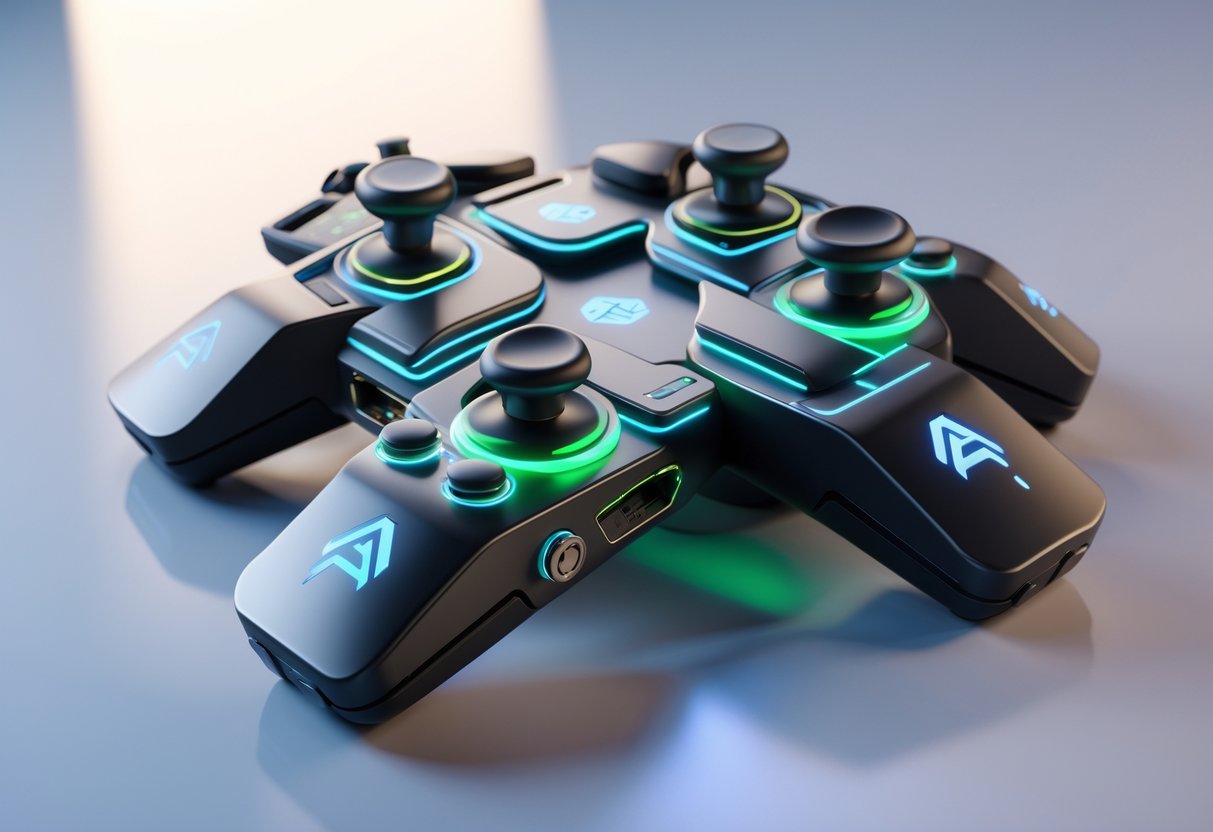
Adaptive controllers really change the game by letting you connect switches, joysticks, and custom inputs to build a setup that fits your needs. You can mix and match to create a control scheme that actually works for you.
Adding External Adaptive Switches
External switches give you precise control over specific game functions. The Xbox Adaptive Controller includes nineteen 3.5mm ports for all sorts of switches.
Common switch options include:
- Big button switches for easy activation.
- Sip-and-puff switches you control by breathing.
- Foot pedal switches for lower limb control.
- Touch-sensitive switches that need barely any pressure.
You can assign any game function to these switches. Maybe you want to jump with a foot pedal and change weapons with a big button—totally doable.
The controller’s USB ports also support more advanced devices. You can plug in eye-tracking systems or specialised joysticks right into those connections.
Quick win: Start with just one or two switches before adding more. That way, you’ll figure out what actually feels right before you go all in.
Utilising Joysticks and Alternative Inputs
Joysticks give you precise movement control, and you can mount them in different ways or adjust their sensitivity. You can use standard gaming joysticks or ones built specifically for adaptive setups.
The Xbox Adaptive Joystick pairs with the main controller and offers adjustable resistance. You can even customise where the buttons sit around the stick base.
Alternative input methods include:
- Chin-operated joysticks for hands-free play.
- Mini joysticks for minimal finger movement.
- Mouth-operated controllers you control with your tongue.
- Head-tracking systems that turn head motion into game input.
Warning: Test joystick sensitivity before you jump into competitive matches. Too much sensitivity can send you flying off course, but too little can feel sluggish.
You can remap buttons through the Xbox Accessories app. Set up multiple profiles for different games and switch between them instantly with the built-in profile button.
Mount compatibility covers AMPS and tripod systems. That gives you the freedom to position the controller wherever it’s most comfortable for you. Comfort matters.
Adaptive Switches and Accessories
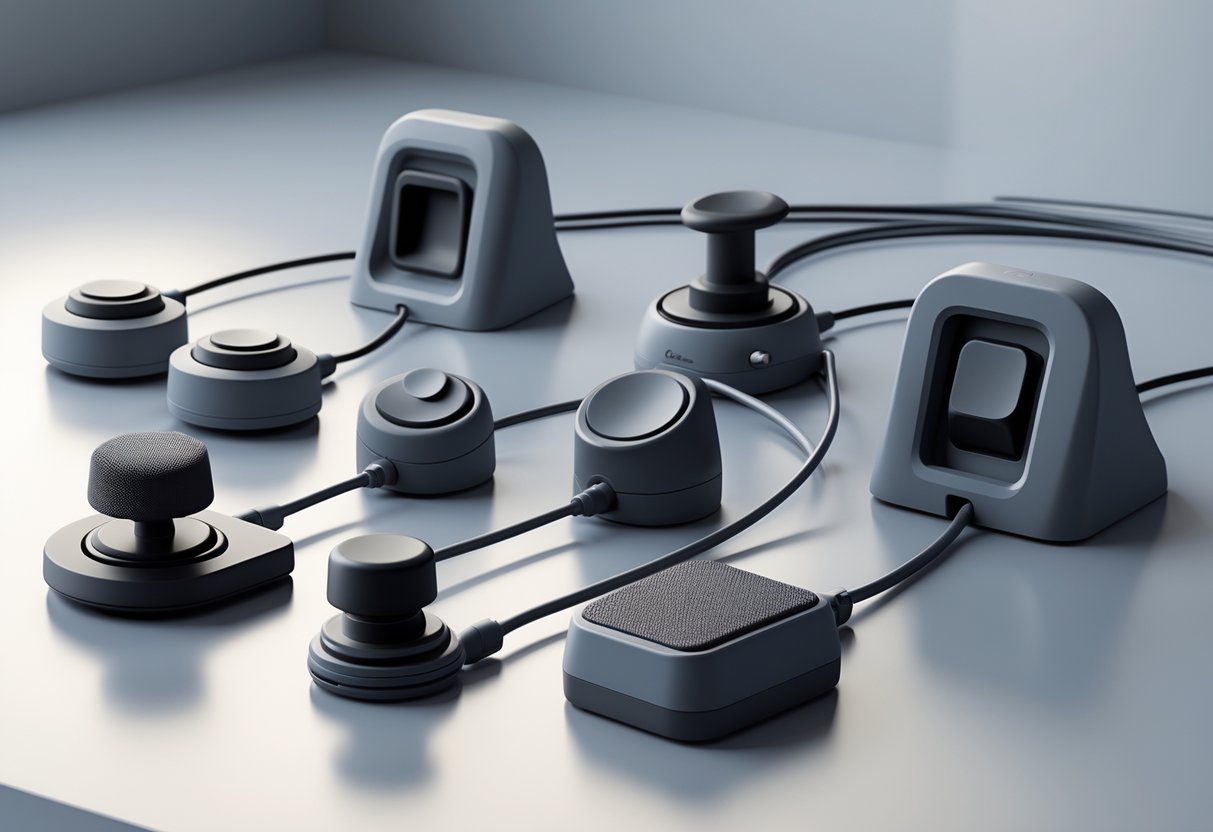
Adaptive switches come in all shapes, sizes, and activation methods. You can mount them wherever works best—on a table, a wheelchair tray, or even strapped to your wrist.
Overview of Adaptive Switch Types
Switches work with everything from finger taps to muscle twitches. The most popular are button-style switches that replace single controller inputs.
Light touch switches barely need any pressure. The Ultra Light 1 HD Switch is great for elbows, toes, or even as a bite switch. Many gamers use these for directional pad functions because they’re so responsive.
Standard pressure switches come in three main sizes. The small Specs Switch has coloured caps and mounting straps. Medium Jellybean switches offer colour-coding and a bit more surface area. The Big Red Switch is huge—perfect as a foot or head switch.
Specialty switches handle unique needs. Twitch switches pick up muscle movement, even from a calf or eyebrow. Sip ‘n puff switches respond to breathing. Bite switches go in your mouth and trigger when you bite down. Warning: Clean mouth-activated switches regularly for hygiene.
The Logitech Adaptive Gaming Kit bundles twelve switches with mounting boards at a solid price. It’s honestly a top pick for newcomers, though you’ll need to buy joysticks separately.
Mounting and Placement Solutions
Getting your switches in the right spot can mean the difference between frustrating sessions and comfortable play. Try temporary mounting first before making anything permanent.
Hook-and-loop boards come with most switch kits and stick to flat surfaces. You can move switches around until you find what works. These boards attach to desks, wheelchair trays, or bed tables.
Mounting straps and ties let you fasten switches to your body or furniture. The Specs Switch includes a wrist strap for palm activation. Lots of gamers strap switches to chair arms or table edges for easy access.
Positioning arms and clamps help you place switches exactly where you need them. These adjustable arms keep switches steady and let you fine-tune angles. They’re especially useful for things like chin joysticks.
3D printed solutions give you custom mounting options. Tons of gaming communities share free designs online. You can print them yourself or ask a disability support group for help.
Choosing the Right Adaptive Controller
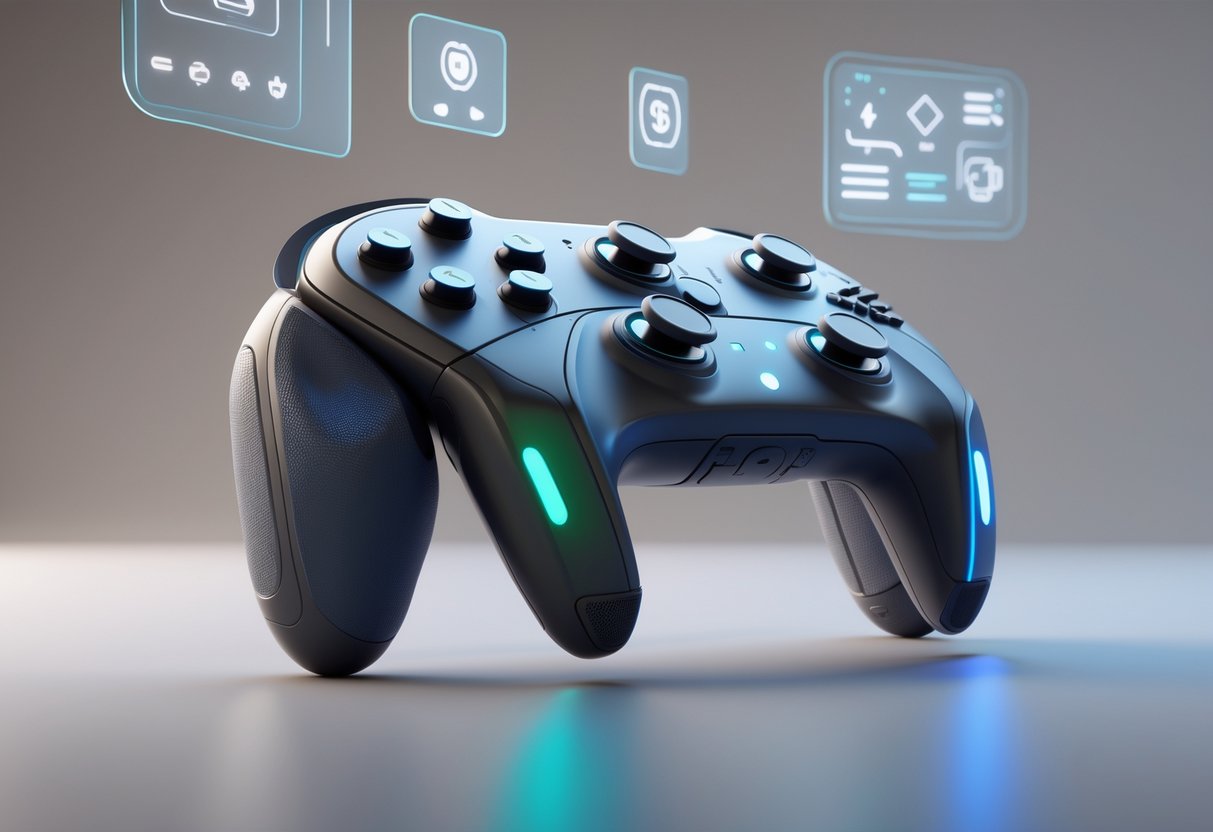
Finding the right adaptive controller is all about matching your needs with the right tech. Take a little time to think about your physical requirements and gaming preferences before you dive into the options.
Factors to Consider for Individual Needs
Your physical abilities decide which adaptive controller will work best for you. Look at which movements you can comfortably make and which parts of a standard controller give you trouble.
Range of Motion Assessment
Think about how much you can move your arms, hands, and fingers. If you’ve got good arm movement but small buttons are tough, something like the Xbox Adaptive Controller is a solid choice. You can plug in bigger switches and joysticks that are easier to hit.
If you have very limited movement, head-controlled options like the Quadstick might be a better fit. This controller uses mouth and breathing controls.
Strength and Endurance Levels
Some controllers take more effort than others. The Xbox Adaptive Controller can get tiring because you need to reach for switches spread out across a surface.
Lighter controllers from Evil Controllers make button presses easier and weigh less. That’s a big help if you tire out quickly during long sessions.
One-Handed Gaming Needs
If you’re gaming one-handed, there are controllers made just for you. The Azeron Cyro puts everything within reach of one hand. MMO gaming mice work too, letting you hit a ton of buttons with just your thumb.
Questions to Ask Before Selecting
We’ve found a few key questions help narrow down your choices. These really steer you toward the controller that fits your situation.
What Games Do You Want to Play?
Fast-paced games like shooters need quick access to lots of controls. The Quadstick is great here because you can program all the controls to different breathing patterns.
Slower games with fewer controls work well with the Xbox Adaptive Controller. Racing and puzzle games don’t need as many button presses at once.
How Complex a Setup Can You Handle?
Some controllers need a lot of programming and customisation. The Quadstick takes time to set up different profiles for each game, but you get tons of flexibility.
The PlayStation Access Controller is easier to set up. You can just remap preset buttons without much hassle.
What’s Your Budget and Platform?
Prices vary a lot. The Xbox Adaptive Controller is around £75, but you’ll need extra switches and joysticks—so the total can hit £300-500.
Make sure your controller actually works with your gaming platform. The Xbox Adaptive Controller supports Xbox and PC, but the PlayStation Access Controller only works with PS5.
Adaptive Controllers for Different Platforms
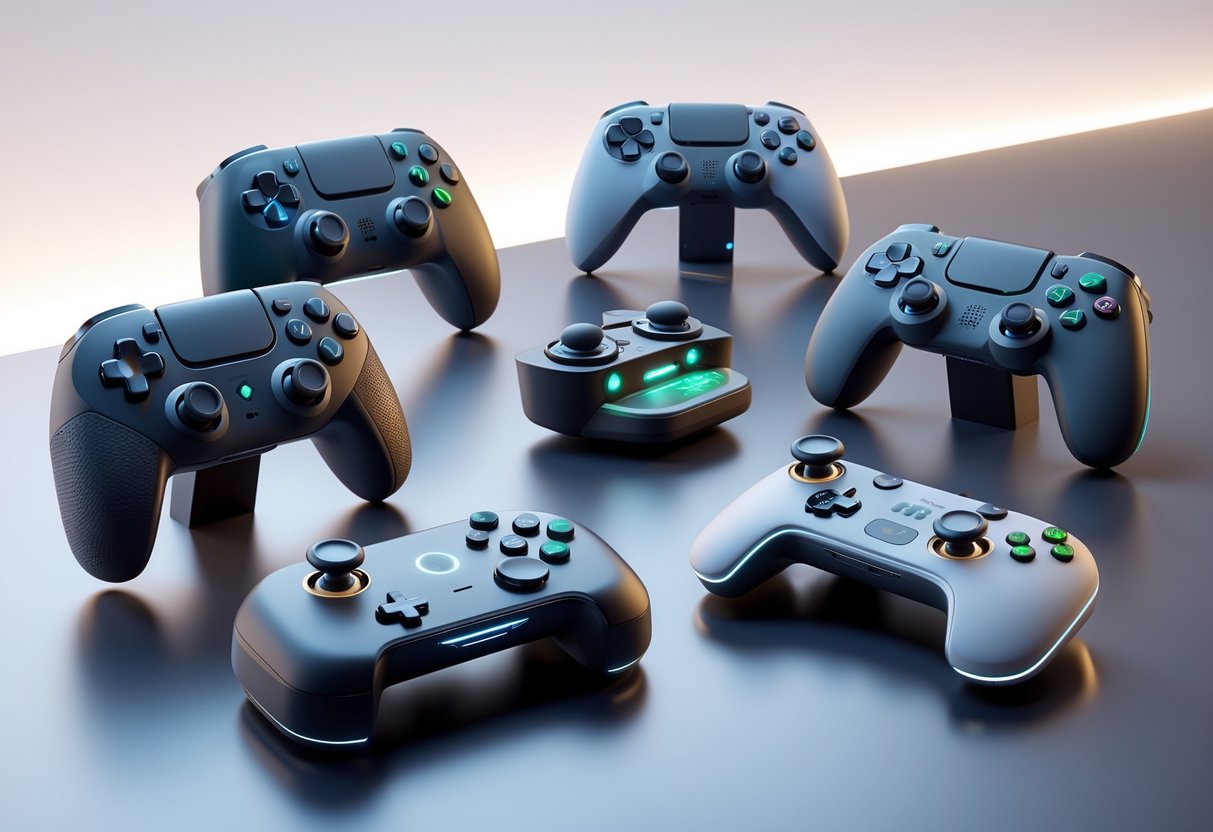
The Xbox Adaptive Controller leads the way for cross-platform compatibility, working with Xbox consoles, PC, and even mobile devices. PlayStation and Nintendo users have fewer official choices, but third-party solutions and workarounds do exist.
Xbox Adaptive Controller Across Devices
The Xbox Adaptive Controller offers the most device compatibility in adaptive gaming. You can connect it natively to Xbox One, Xbox Series X/S, and Windows 10/11 PCs with wireless or USB.
Primary Platform Support:
- Xbox consoles (wireless and wired)
- Windows PCs via Xbox Wireless or USB-C
- Android devices through Bluetooth
- iOS devices with certain games
The controller costs £75 as a base unit. Most people add extra peripherals to get full functionality. The Logitech Adaptive Gaming Kit adds essential buttons and switches for £90.
You can use the controller with up to nineteen external devices at once. That includes joysticks, switches, and specialty inputs through 3.5mm jacks and USB ports.
Cross-Platform Gaming Benefits:
- Xbox Game Pass runs across all supported devices.
- Your save progress syncs between platforms.
- You can use the same controller setup everywhere.
- Co-Pilot mode is available on Xbox consoles.
Solutions for PlayStation Compatibility
Sony launched the PS5 Access Controller in December 2023 at £80 per unit. Unlike Xbox’s hub approach, PlayStation made their controller a complete solution, so you don’t need as many extras.
PS5 Access Controller Features:
- One large analogue stick per controller.
- Customisable button layout.
- Four 3.5mm ports for external switches.
- Compatible with existing DualSense controllers.
Most players need two PS5 Access Controllers (£160 total) to match full DualSense functionality. That’s actually less than a fully equipped Xbox Adaptive Controller setup.
The PS5 Access Controller supports Co-Pilot mode. You can use up to two Access Controllers plus one DualSense as a single player input.
PS4 and PS3 Limitations:
- No official adaptive controllers.
- Third-party options like Brook converters let you use the Xbox Adaptive Controller.
- Compatibility issues and limited features are common.
Options for Nintendo Switch Support
Nintendo Switch honestly has the most limited adaptive controller options. The Hori Flex controller, at £190, is the only mainstream choice for Switch accessibility.
Hori Flex Specifications:
- All face buttons included (no analogue sticks).
- 20 input ports for external devices.
- Small, cramped button layout.
- No motion control support.
Adding external joysticks costs about £60, so you’re looking at £250 total. The Logitech Adaptive Gaming Kit works with Hori Flex, which adds another £90 for more button options.
Major Limitations:
- No Co-Pilot mode.
- Can’t combine with Joy-Cons or Pro Controllers.
- Motion-controlled games are off the table.
- Entry cost is high compared to other platforms.
Party games like Super Mario Party require motion controls that Hori Flex just can’t provide. Some titles are completely unplayable with adaptive controllers on Switch.
Emerging Adaptive Controller Innovations

New tech is making adaptive controllers way more accessible and practical for regular folks. Major tech companies and gaming organizations are teaming up to build better solutions for players with disabilities.
Recent Developments in Accessibility
Adaptive controller technology has come a long way in just a few years. Microsoft kicked things off with the Xbox Adaptive Controller in 2018, and that move really changed everything.
This device lets players hook up external switches, buttons, and joysticks, all tailored to their unique needs. The controller sports big programmable buttons and lots of input ports.
Players can tweak pretty much every part of their gaming setup. People connect foot pedals, sip-and-puff gadgets, or even huge button arrays to get things just right.
Other companies didn’t waste time jumping in. Logitech rolled out the Adaptive Gaming Kit with a bunch of switches and triggers.
These accessories pair up with the Xbox Adaptive Controller, giving users even more ways to customize.
Peripheral makers are getting creative too. One-handed controllers, eye-tracking tech, and voice-controlled interfaces are popping up—and they’re getting cheaper and better.
Collaborations and Industry Support
Gaming companies now work directly with disability organizations to make better products. Microsoft partners with groups like The AbleGamers Charity and SpecialEffect, listening to what real users want.
These partnerships help new controllers actually solve problems that players deal with every day.
Game developers are pitching in as well. Big studios now build adaptive controller support into their games from the start.
That means you get button remapping, adjustable timing, and alternative input methods that actually work.
More gaming tournaments are adding adaptive gaming categories. Events like the Xbox Adaptive Controller Gaming Tournament give players with disabilities a shot at real competition.
This kind of recognition is pushing innovation even further.
Funding for adaptive gaming research has jumped up too. Private companies and government grants are backing developers who focus on accessibility.
Notable Manufacturers and Brands
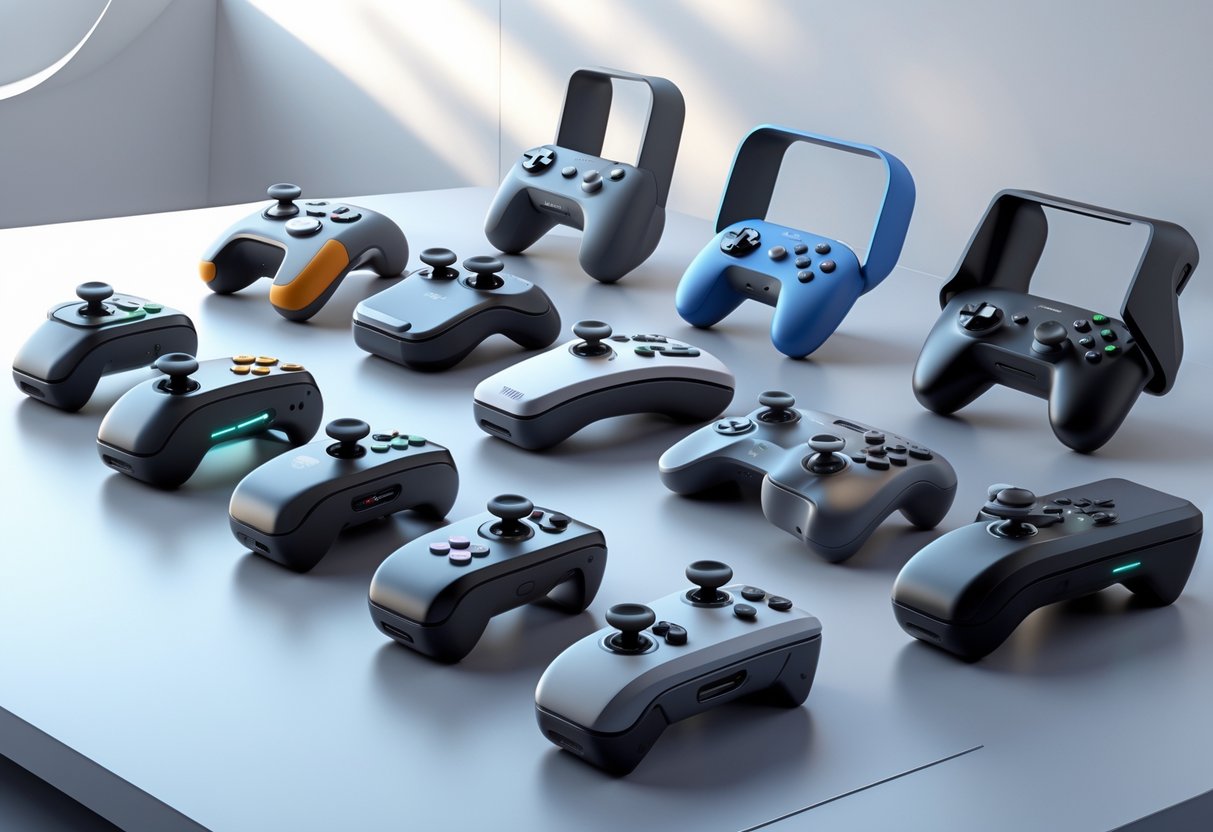
The adaptive gaming market has a mix of heavy hitters and small startups. Microsoft leads the pack with mass-produced solutions, while companies like Evil Controllers handle custom modifications for individual needs.
Microsoft’s Role in Adaptive Innovation
Microsoft really shook things up with the Xbox Adaptive Controller in 2018. They became the first big gaming company to design a controller just for players with disabilities.
The Xbox Adaptive Controller runs about £75. It offers big programmable buttons and 19 input jacks.
Players can connect all sorts of switches, buttons, and joysticks to build their own setup.
Key Features:
- Two large buttons that can take on multiple functions
- 19 ports for extra accessories
- Works with Xbox One, Series X/S, and PC
- Compatible with hundreds of third-party switches
The controller acts as a hub. Players plug in foot switches, head controls, or even mouth-operated devices.
Microsoft worked with disability organizations during the design process to get it right.
This wasn’t just a PR move. The Xbox Adaptive Controller showed that accessible gaming can be profitable, and suddenly, other companies started paying attention.
Overview of Evil Controllers
Evil Controllers takes a different path. Instead of inventing new hardware, they modify standard controllers for specific disabilities.
They started back in 2008, making custom controllers for competitive gamers. Now, they focus on adaptive modifications.
Their team builds each controller for one person’s exact needs.
Services include:
- Button remapping and moving buttons around
- One-handed controller mods
- Reduced force triggers and bumpers
- Custom button sizes and shapes
Prices usually range from £80 to £200, depending on what you need. Since they hand-build everything, you might wait 3-4 weeks for your controller.
Evil Controllers talks directly with customers. They ask about your disability and preferences, then build a controller that fits you perfectly.
Other Leading Brands and Start-ups
A bunch of other companies are making adaptive gaming gear, each with their own focus.
QuadStick builds mouth-operated controllers for around £350-400. Players control games using lip pressure and breath. These controllers work with most consoles and even include voice recognition.
Logitech sells the Adaptive Gaming Kit for about £80. It comes with programmable buttons and triggers that work with their regular mice and keyboards.
3DRudder makes foot controllers for £150. Players use their feet for movement, freeing up their hands for other tasks.
Smaller outfits like Blue Tip Gaming and Pretorian Technologies focus on niche solutions. They make one-handed controllers, eye-tracking tech, and voice interfaces.
This market keeps expanding as more companies jump in. A lot of them started as passion projects by gamers with disabilities who just couldn’t find the right gear.
Future Trends in Adaptive Gaming
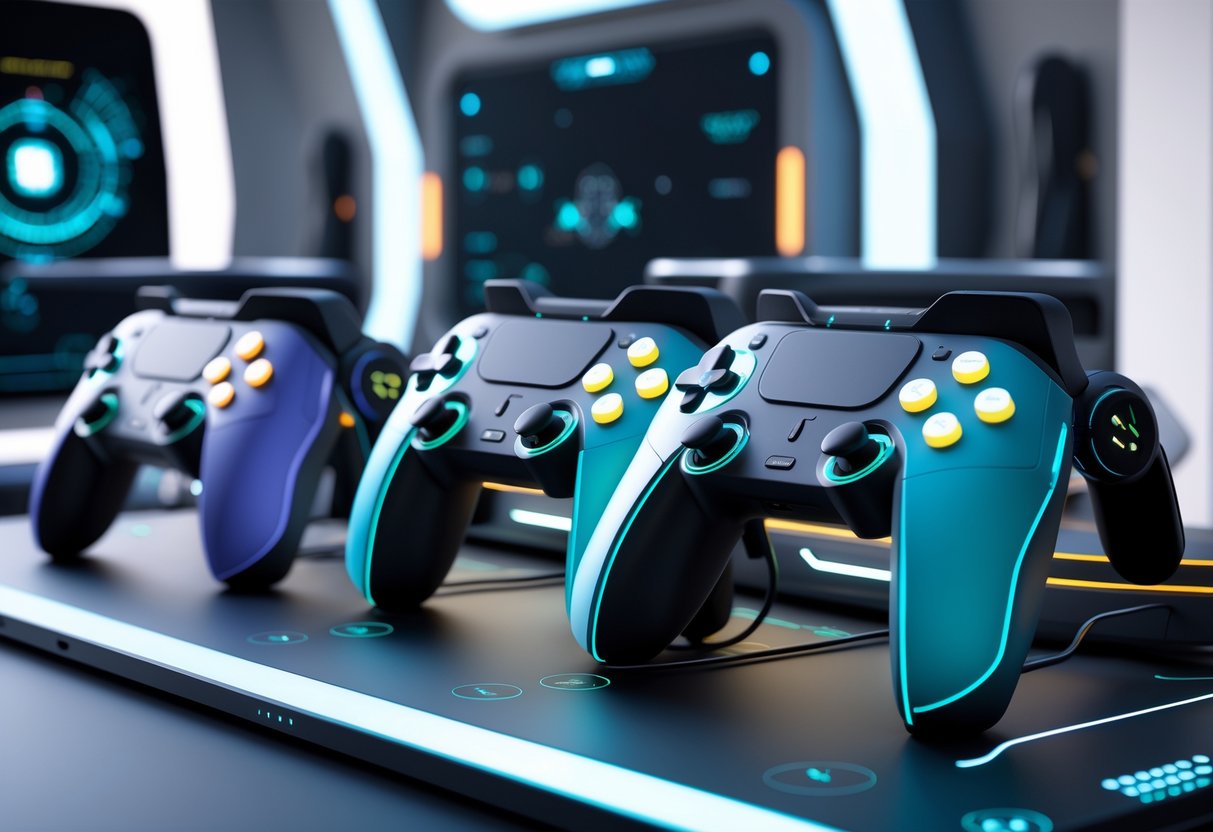
Analysts expect the adaptive controller market to grow at a 10.2% CAGR from 2025 to 2033, hitting £2.8 billion globally. We’re about to see big changes in how controllers work across platforms and how player feedback shapes new designs.
Predictions for Universal Compatibility
Universal compatibility is coming, and it’s going to change everything. By 2027, most adaptive controllers should work with PlayStation, Xbox, Nintendo Switch, and PC—no adapters needed.
Key developments include:
- Single controllers that support multiple console protocols
- Cloud-based syncing for settings across platforms
- Standardized button mapping
- Cross-platform tournament compatibility
Major brands like Microsoft and Logitech are already working on universal wireless protocols. Soon, gamers won’t have to buy separate controllers for each system.
That means less money spent—no more shelling out £200+ for every platform. Players can invest in one solid device, making competitive gaming way more accessible for people who used to face big financial hurdles.
Gaming tournaments want universal standards too. Organizers push for consistent equipment, so adaptive gamers can compete on a level playing field.
The Impact of Community Feedback
Community feedback drives nearly every new adaptive controller feature these days. Player suggestions shape button placement, sensitivity options, and new accessibility features.
Current feedback channels include:
- Beta testing with disabled gamers
- Social media requests
- Accessibility forums
- Pro player partnerships
Microsoft built the Xbox Adaptive Controller because the community asked for it. Players told developers exactly what they needed, from 3.5mm jack compatibility to programmable button layouts.
Development cycles are speeding up. Companies now push out firmware updates monthly based on user feedback. Features that used to take years can show up in just a few weeks.
Co-design partnerships are the most exciting thing right now. Manufacturers work side by side with disabled gamers throughout development. That way, new controllers actually solve real problems.
In 2025, expect to see community-driven features like voice-controlled button mapping, AI-powered grip adjustments, and customizable haptic feedback.
Frequently Asked Questions
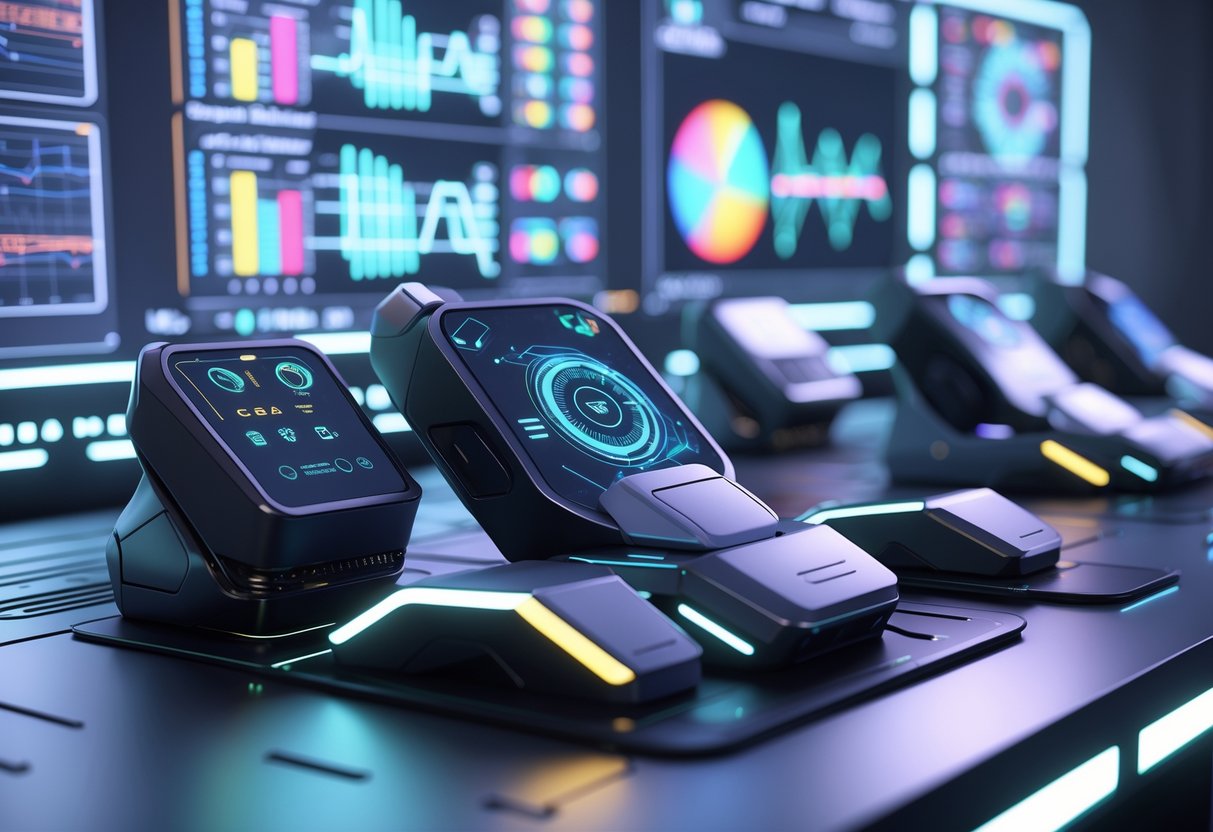
Gamers have tons of questions about customizing adaptive controllers and picking the right accessories. Here are some honest answers to the most common concerns around accessible gaming.
How can I customise an Xbox Adaptive Controller to my specific needs?
The Xbox Adaptive Controller gives you loads of customization options with its big programmable buttons and external ports. You can remap any button using the Xbox Accessories app on your console or PC.
It has 19 3.5mm jacks and two USB ports for connecting external switches, buttons, and joysticks. That means you can plug in foot pedals, sip-and-puff switches, or oversized buttons—whatever works for you.
You can also tweak trigger sensitivity and set up multiple profiles for different games. Each profile saves your button mappings and settings automatically.
What accessories can I use with the PlayStation Adaptive Controller?
PlayStation doesn’t make its own adaptive controller yet. But you can use third-party accessibility accessories with your DualSense controller.
Many players use button remapping devices that sit between the controller and the console. These let you reassign functions to different buttons or external switches.
Some of the most popular options include one-handed controllers and large button add-ons. These work with most PlayStation games, though setup might take a little extra effort.
Is there an adaptive controller option for Nintendo Switch users?
Nintendo hasn’t released an official adaptive controller for the Switch. Still, the console supports some third-party accessibility gear through its USB ports when docked.
You can use certain Xbox-compatible adaptive accessories with adapters that convert the signals for Switch. But honestly, this setup can get complicated and doesn’t always work with every game.
The most reliable option is usually a third-party controller built for one-handed play. These typically connect wirelessly and work in both docked and handheld modes.
Are there any budget-friendly options for adaptive gaming controllers?
The Xbox Adaptive Controller costs around £75, which is actually pretty reasonable compared to building a custom setup. You’ll still need extra accessories, though, and those can add up.
Basic switches and buttons often start at £10-20 each. Sometimes you can find refurbished adaptive gear or even make DIY solutions for common needs.
Some charities and accessibility groups offer loan programs or discounted equipment. It’s worth checking with local disability organizations for help.
What should I look for when choosing buttons for an adaptive controller setup?
Button size is key for easy activation. Larger buttons (at least 2.5cm across) usually work better for players with limited fine motor skills.
Think about how much force it takes to press each button. Some need a firm push, while others respond to the lightest touch. Choose what fits your abilities.
Look for buttons with clear visual feedback, like LED lights that light up when pressed. That makes a big difference during intense gaming sessions when you need to know you hit the right input.
How does the Xbox Adaptive Controller improve gaming accessibility?
The Xbox Adaptive Controller breaks down barriers that standard gamepads put up for players with limited mobility. Its flat shape fits nicely on wheelchairs, desks, or even just your lap.
Those big, programmable buttons are much easier to hit than the tiny buttons you find on regular controllers. You can map any game function you want to these larger surfaces.
You can also hook up external devices, so players get to pick whatever input works best for them. Maybe it’s foot pedals, head switches, or even breath-activated buttons—hand controls aren’t the only option anymore.

